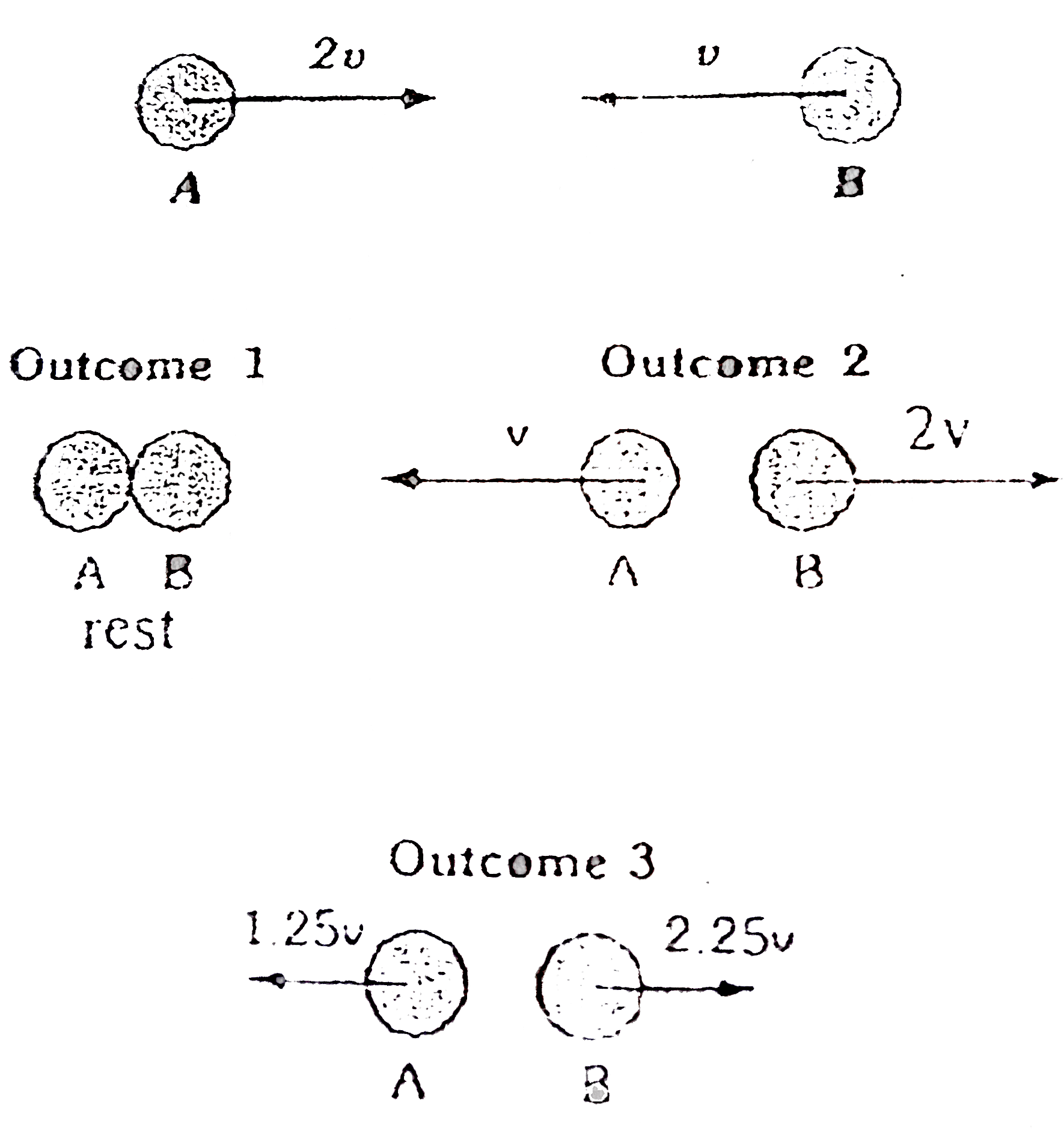Two identical balls moving in opposite directions in free space collide head on. How they will move after the impact, is decided by coefficient of restitution. For different coeffecients of restiution, few possible outcomes are shown in the following figures. Which of the above outcomes are physically possible for a collision?

Only 1
Only 2
1 and 2 but not 3
1 2 and 3 all
The correct Answer is:B
Ans.(2) (Linear momentum should be conserved)
Topper's Solved these Questions
- TEST PAPERBOOK - ALLENCHAPTER - TEST PAPEREXERCISE - PHYSICS
4 Videos
- TEST PAPERBOOK - ALLENCHAPTER - TEST PAPEREXERCISE - PHYSICS
4 Videos
- SIMPLE HARMONIC MOTIONBOOK - ALLENCHAPTER - SIMPLE HARMONIC MOTIONEXERCISE - Example
1 Video
- TEST PAPER 1BOOK - ALLENCHAPTER - TEST PAPER 1EXERCISE - PHYSICS
11 Videos
Similar Questions
Two ball bearings of mass m each moving in opposite directions with same speed v collide head on with each other. If the collision is perfectly elastic, what will be the outcome of the collision ?
View SolutionTwo ball bearings of mass m each moving in opposite directions with each speeds v collide head on with each other . Predict the outcome of the collision , assuming it to the perfectly elastic.
View Solution
Knowledge Check
A 1kg ball moving at 12m/s collides head on with a 2g ball moving in the opposite direction at 24m/s. The velocity of each ball after the impact, if the coefficient of restitution is 2/3 is
A12m/s,36m/sB−28m/s,−4m/sC20m/s,24m/sD−20m/s,−4m/sTwo identical balls moving in opposite direction with speed 20 m/s and 25 m/s undergo head on perfectly inelastic collision. The spped of combined mass after collision is
A20msB22.5msC25msD2.5msTwo identical balls moving in opposite directions with speed 20 m/s and 25 m/s undergo head on perfectly inelastic collision. The speed of combined mass after collision is
A20 m/sB22.5 m/sC25 m/sD2.5 m/s
A ball P is moving with a certain velocity , collides head-on with another ball Q of same mass is rest. The coefficient of restitution is 1/4, then ratio of velocity of P and Q just after the collision is
View Solution2kg ball moving at 6ms−1 collides head on with a 3kg ball moving in the opposite direction at 12m/s .The velocity of each ball after the impact, if the coefficient of restitution is 1/2, is ?
View SolutionA ball moving with velocity 2ms−1 collides head on with another stationary ball of double the mass. If the coefficient of restitution is 0.5, then their velocities (in ms−1) after collision will be
View SolutionA ball moving with velocity 2 m/s collides head on with another stationary ball of double the mass. If the coefficient of restitution is 0.5, then their velocities (in m/s) after collision will be
View SolutionWhen two identical balls are moving with equal speed in opposite direction, which of the following is true ? For the system of two bodies.
View Solution
